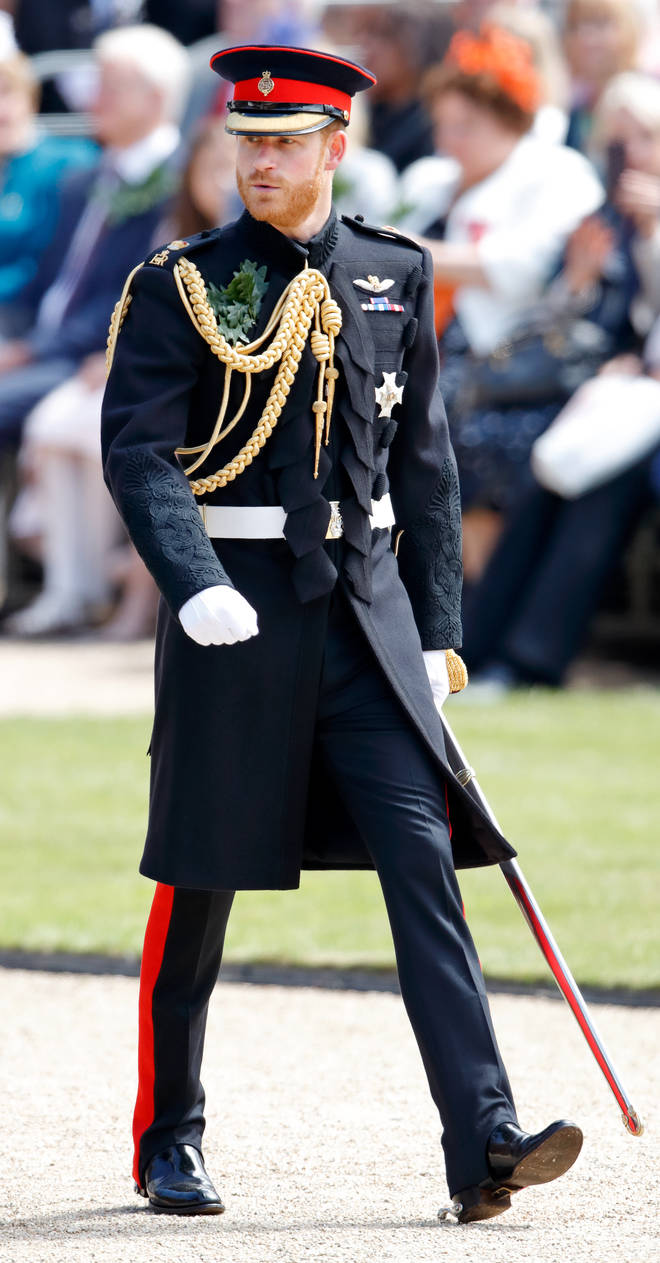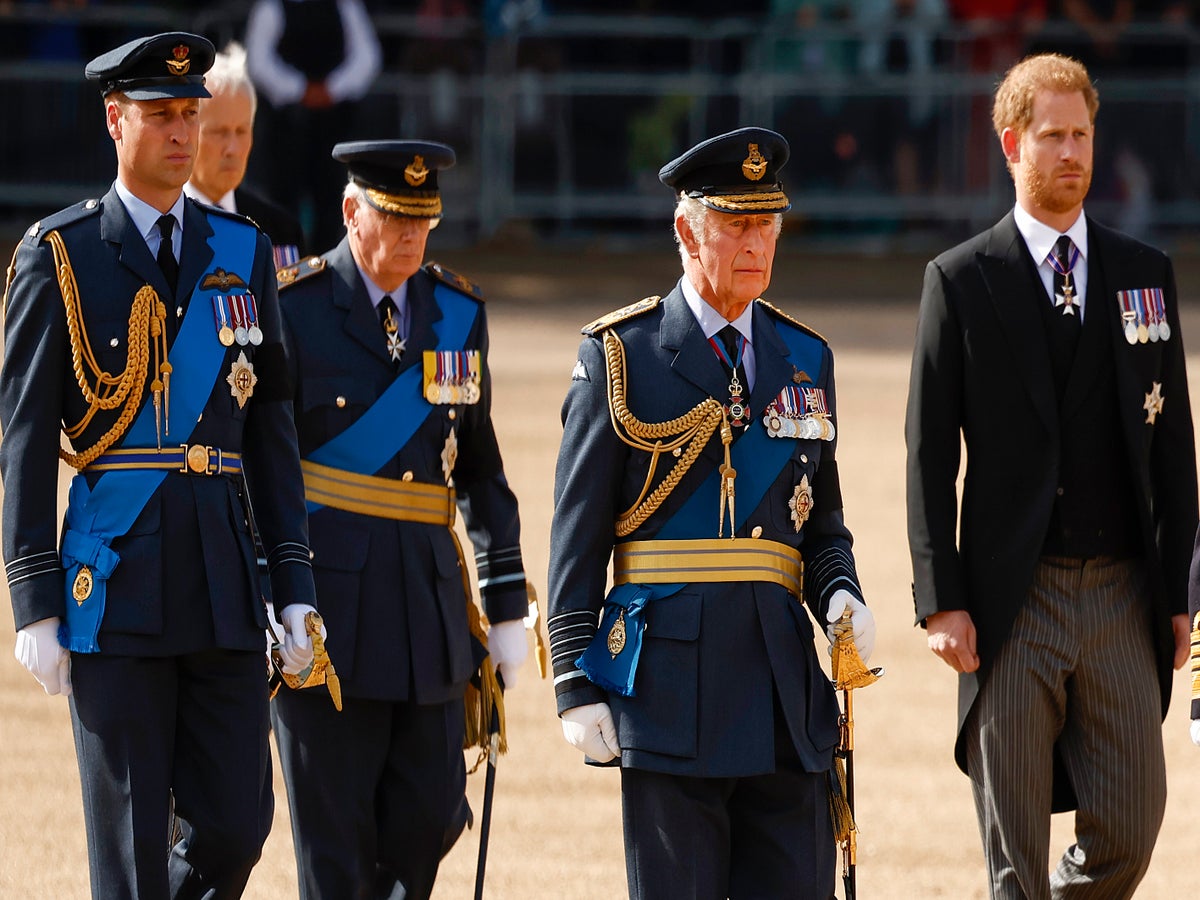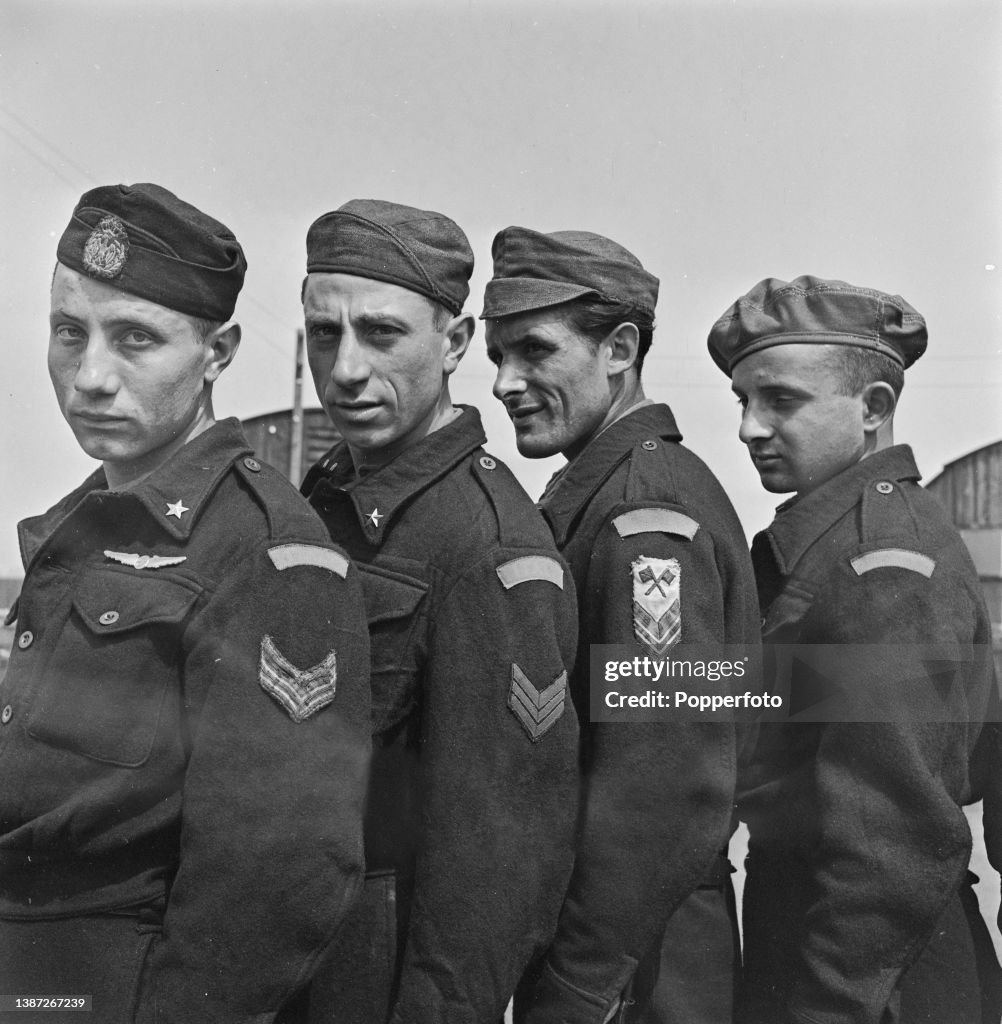England Military Uniform - In the late 17th century, the uniform color of the British Army (England had not joined Scotland to form the United Kingdom), mostly settled on red with few exceptions. In the early 18th century it was common practice to distinguish regiments with different faces, in the decade following the end of the Napoleonic Wars, British Army uniforms became more extravagant than practical.
This trend was reversed during the Crimean War with the use of looser tunics and more practical headdresses. But the red coat was retained, except in India, where gray coats were introduced in 1848 and increased in number from 1857.[3]
England Military Uniform

Whether black or gray, the uniform coat has historically been made from wool, known as bee, to give shape to the fabric. Modern red wool was introduced by "Abimelech Hainsworth" and is lighter than the traditional material, intended for hard wear in active service.[22]
Material Used
Members of the United States Marine Band wear red uniforms for performances at the White House and other venues. This is a rare survival of the common 18th-century custom of military bands wearing reverse-colored coats compared to other units (the US Marines wear blue/black tunics with red facings, so the US Marine Band is blue/black).
wear red tunics with faces). While the Queen no longer wears formal military uniform for royal events, it wasn't until 1986 that she took part in the Trooping the Color parade while wearing full formal dress.
(And riding sideways, no less!) For the final ride in the procession, the Queen wore an officer's uniform, specially designed for the Scots Guards. As Commander-in-Chief of the British Armed Forces, the Queen has a wide selection of dress uniforms to choose from.
color Worse were the colors used for infantry, guards and linemen's coats. Green dyes are known to be simple and reliable and have been the first choice for low-quality red dyes since ancient times, until chemical dyes became cheaper in the late 19th century.
Red Coat As A Symbol
Note that uniforms may vary from one regiment or corps to another. , and the following description is a generalization. Also, while there are officially fifteen different grades (or 'numbers'), many of them are rarely used or have been eliminated entirely.
(For example, the various combat uniforms (No. 5 (desert), No. 8 (hot weather) and No. 9 (tropical)) although still listed in the dress code, are in the process of being replaced by new ones. San. Personnel Combat System - Combat Uniform or PCS for short. It uses multi-terrain pattern camouflage and is sometimes erroneously called the MTP uniform. There are many examples of red military uniforms that the New Model Army
has been widely adopted by .created in 1485. ) traditionally in Tudor red and gold. red with yellow feathers were worn" [4] At Edge Hill, the first battle of the Civil War, the King's Lifeguards wore red coats, as did at least two Parliamentary regiments".[5]
 Source: media.gq-magazine.co.uk
Source: media.gq-magazine.co.uk
But none of these are examples of the national uniform that later became the red coat. In 2014, the princess joined Harry in the uniform of the Royal Blues and Royals, where he was the colonel of the regiment.
No Temperate Barrack Dress
(She is technically Harry's superior.) Anne also wins an impressive number of various Jubilee and Coronation medals, as well as the Order of the Gator Sash and Star and the Order of the Thistle Star. In the early 19th century, the Ejército Libertador (Army of Liberation), the Red Hussar cavalry uniform inherited from the British army used by the Guard of Honor of the Liberator Simón Bolívar.
From an early stage, the red coat was lined with a contrasting color and provided a distinctive regimental face (lapel, cuffs and collar). Examples are blue for the 8th Regiment of Foot, green for the 5th Regiment of Foot, yellow for the 44th Regiment of Foot and buff for the 3rd Regiment of Foot.
1747 saw for the first time a series of Royal Dress and Warrant Regulations, which explained the variety. Colors and distinctions should be borne by each regiment. [10] Attempts at standardization were made after the Childer's Reforms of 1881, with English and Welsh regiments having regimental white, Scottish yellow, Irish green and Royal red blue.
But some regiments managed to reintroduce their historical face paint.[11][12] Troops from other services, regiments or corps attached to units with special colored berets often wear the vest with their cap badge. Colonels, brigadiers and generals often continued to wear regimental or corps berets that had a cap badge specific to their rank.
No Tropical Combat Dress
The Royal Fusiliers regiment used to wear a fur hackle on their berets, now the only infantry regiment to wear a navy blue beret. Other ranks of the Royal Welsh also wore hackles. In the modern British Army, red is still worn by peer guards, life guards, and some regimental bands or drummers.
Officers and NCOs of regiments that had previously worn red retained red as the color of their "mess" or official evening jacket. Some regiments became small troops, such as color guards, in full red uniforms at their own expense.
for example. Yorkshire Regiment before amalgamation. The Royal Gibraltar Regiment had a red tinge in their winter dress. The full dress is the most elaborate and traditional formation by the British Army. In 1914 it was removed from general issue.
In the 1920s the Household Division began to wear full red and blue uniforms, but for the rest of the army, red coats and other clothing items were worn only by regimental bands. In dirty clothes or in some social events or ceremonies.
:max_bytes(150000):strip_icc():focal(999x0:1001x2)/prince-william-prince-harry-queen-elizabeth-funeral-091922-1-99ab834eb8f34bf7b7e3f1d8838df8f3.jpg) Source: people.com
Source: people.com
No Warm Weather Parade Uniform Bush Jacket
An example of this was the coronation of 1937 when a contingent of participating cavalry regiments in full uniform was released for the occasion.[8] The reason for not reintroducing the full dress in general is primarily financial, especially in the middle of the war, as red cloth requires the expensive cochineal red dye.[9]
The adoption and continued use of red by British/British soldiers after the Restoration (1660) was a result of circumstance rather than intellect, including the relative affordability of red. [9] First, red is not universal, with gray and blue coats also used.
[3]: 16 There is no basis for the myth that reds are preferred because they do not show blood stains. Blood actually shows up as black stains on dark clothes. Maria Mercedes Lara is Director of Digital Content Operations for PEOPLE, where she oversees content management and editorial workflow for the digital team as well as focusing on growing PEOPLE's newsletter, homepage and news audience.
He previously served as deputy news director for PEOPLE.com. Prior to joining PEOPLE, Maria worked at POPSUGAR, SpinMedia Group and Jezebel. He passed B.A. in literature from the Eugene Long College of Liberal Arts at The New School in New York City.
Uniform Numbers
Maria currently lives in Brooklyn, New York, with her husband and two children. Prince William tends to wear the formal uniform of the Irish Guards, where he holds the title of honorary colonel since February 2011.
Garter sash with stars and two medals - Queen's Golden Jubilee Medal (left) and Queen's Diamond Jubilee Medal (right). This medal is awarded to military personnel who are serving during Queen Elizabeth II's Jubilee celebrations. Peaked caps were not worn by all regiments.
Berets are used interchangeably by the Royal Tank Regiment, Army Air Corps, Parachute Regiment, Special Air Service and Intelligence Corps.[17] Officers and other ranks of the Royal Fusilier Regiment and other ranks of the Royal Welsh also wear berets where the plume is displayed, reminiscent of the plumes used throughout Busby.[17]
The Royal Regiment of Scotland wears a regimental glengarry with a plume taken from the earlier formal uniform of the Royal Scots and Kings Own Scottish Borderers, the Royal Irish Regiment wears a cubby, while the Gurkhas Brigade wears a round Kilmarnock cap.[7]
No Battledress [Obsolete] –
] In full ceremonial order of dress No. 1, officers wear a silk belt, while general officers wear a gold belt and red sash. Light cavalry regiments wore lace belts instead of belts while rifle regiments wore polished black leather belts.
 Source: static.independent.co.uk
Source: static.independent.co.uk
Other ranks wear a white or black leather belt with a regimental pattern locket, if carrying a bayonet frog. He capped off his appearance with a dark green Order of the Thistle sash and Order of the Garter Star.
To stand out in the crowd, the queen ditched the traditional bearskin hat worn by foot guards for a small black hat. Prince Edward completes the list of royals who currently wear military uniforms as part of the Colored Troops.
(Prince Andrew, Duke of York, did not wear a uniform because he was serving in the Royal Navy and only the Guards Division, which is made up of the Foot Guards and the London Regiment of the British Army, marched in the ceremony.) In 2014,
American Revolution
He wore the dress uniform of the London Scottish Regiment, where he was a Royal Honorary Colonel. In addition to the Order of the Garter sash (hidden under the red belt of his uniform) and Star, Edward also wears a Star for the Royal Victorian Order (not to be confused with the Royal Victorian chain Philip wears, which is an award. And
no knight pair). The red coat evolved from the uniform of the British infantry into a dress reserved for ceremonial purposes only. The official date of adoption is February 1645, when the British Parliament passed the New Model Army Ordinance.
The new British army consisted of 22,000 soldiers, divided into 12 infantry regiments of 600 men each, a dragoon regiment of 1,000 men, and 900 guns in artillery. The infantry wore Venetian red coats with white facings.
A contemporary commentary on the New Model Army dated 7 May 1645 stated that "the men are all redcoats, the whole army being distinguished only by a few faces of their coats".[2][3] Prior to 1707, the colonel of the regiment made his own arrangements for the manufacture of uniforms according to his orders.
Rationale For Red
It ended when a royal warrant dated 16 January 1707 established a council of general officers to regulate the dress of the army. Uniforms issued must conform to "sealed patterns" approved by the Board.[3]:47–48 Originally issued as a field uniform (see Service dress (British Army)), this uniform was worn by all units.
It is mostly used for official duties. No. 2 dress consists, for most corps and regiments, of a khaki jacket, shirt and tie with trousers or skirt. No. in the traditional dress ceremony. 2, the headdress is the same as that worn with dress No. 1, except for the Gurkha brigade, who wear a long cap and Rani Hussar officers who wear the "tent cap" (a single headdress worn without a cap badge. or other
 Source: media.gettyimages.com
Source: media.gettyimages.com
difference). The Royal Regiment of Scotland wears a special jacket pattern with a front cut, worn with regimental tartan kilts or a trio. The trousers are worn by several units: red by the King's Royal Hussars and dark green by the Royal Irish Regiment and Royal Dragoon Guards.
The term redcoat came from Tudor Ireland as a derogatory term for the British in the 16th century, because British soldiers in the Irish army lieutenants in the army wore red coats, when the first British army all wore red uniforms.
Brought to America and Europe. by Irish immigrants. As early as 1561, the Irish referred to a victory over royalist forces as Cath na gCasóga Dearga, literally meaning 'Battle of the Red Cossacks' but usually translated as Battle of Red Sagum - sagum being a cloak or coat.
In 1595 it was mentioned that the Irish rebel Hugh O'Neill, Earl of Tyrone had "300 shots like an English soldier in a red coat" - inferring that English soldiers in Ireland were distinguished by their red uniforms.
. Like many members of the royal family, Prince Charles has many military appointments (both honorary and previously held positions), so he changes his uniform for various royal events. In 2014, he commissioned the Welsh Guards, where he had served as an honorary colonel since 1975.
Like William, he also wore the sash and star of the Order of the Garter, the star of the Order of the Thistle. Gold Eaglets. right shoulder By the end of the 18th century, the cloth used for private soldiers was a plain 16 oz per square yard made from English wool blends.
Weight is often stated in contemporary documents per running yard, however; So a yard of fabric 54 inches wide weighs 24 ounces. This sometimes leads to the false statement that the fabric weighs 24 oz per square yard.
For most regiments and Corps No. 1, the dress consists of a dark blue tunic and shorts or breeches. Overall (or skirt) with colorful top hat. Women must wear normal dark colored tights. Different units are distinguished by the color of the hat, piping on the tank and welts or stripes on the pants, as well as markings and specials.
Cavalry regiments because of the color of the collar. William also wears the wings of the Royal Air Force (while serving as a helicopter pilot in the RAF until 2013) with a medal and star of the Order of the Thistle, to which he was appointed.
 Source: i.pinimg.com
Source: i.pinimg.com
In 2012. He also wears a gold agilate on his right shoulder to mark his 2013 appointment as personal aide to the Queen. Every regular military soldier is issued with a shirt number 2. Generally, this dress order is for Army Reserve units.
All officers and SNCOs in khaki uniforms are issued by the unit for use by Cpls and below. [20] He tops his uniform with three medals – the Operational Service Medal for Afghanistan (left) awarded to those on active duty in Afghanistan, the Queen's Gold.
Jubilee Medal (centre) and Queen's Diamond Jubilee Medal (right). Harry also wears Army Air Corps wings on top of his medal. Unlike other senior members of the royal family, Harry is not (yet) a member of the Order of the Garter, so he does not wear the distinctive blue belt.
He was also made a Knight Commander of the Royal Victorian Order by the Queen in 2015. (Seen at the lower right of the collar.) Khaki barrack dress pants (as issued under the Future Army Dress (FAD) program) and issued standard shirt with a pullover from dress #2.
Stable belts are worn by some regiments and corps over pullovers. Some regimental officers and WOs may wear colored pullovers in place of the green pattern. The following regimental patterns and colors are permitted:[26] Dress No. 3 is the same warm weather dress.
When adopted in the early 1950s, it consisted of an all-white embroidered cotton leg, cut in the same manner as no. It is tied with a colored No. 1 dress hat. Number 3 clothing is usually issued temporarily, which is withdrawn from the unit upon leaving the station.
This order of dress is similar to the white drill uniform worn in pre-World War I India for ceremonial "warm-ups" and off-duty.[21] Scarlet tunics were not uncommon during the British mobilization of August 1914. The Guards Brigade continued to dress in full red in the 1920s, but for the rest of the army red coats were only allowed to be worn by regimental bands and officers.
dress or on certain social or formal occasions where restricted (especially attendance at court events or weddings).[14][15][16] The reason for not introducing the normal full dress was largely financial, as red cloth required the expensive cochineal dye.
The PCS-CU jacket is always thick, with sleeves. But the MTP style shirt was introduced in 2015 and it can be worn in summer with flared sleeves. While the shirt may be worn in winter, the shirt is always covered with sleeves.
No. 1 Dress, sometimes called "blue", is a universal formal uniform which is uniform throughout almost the entire British Army. No. 1 Worn only on ceremonial occasions, and, in some regiments, by officers on duty. It is also necessary to regularly appoint other units, senior staff officers, and officers as assistants to the royal family [15] and the personal staff of senior officers in command.
The order was not generally issued to all units, with sketch uniform numbers. 2 is the main parade uniform.
british military uniforms, british military dress uniforms, english military uniforms, english soldier uniform, uk military uniform, british army uniform, british soldier uniform, british military combat uniforms
0 Comments